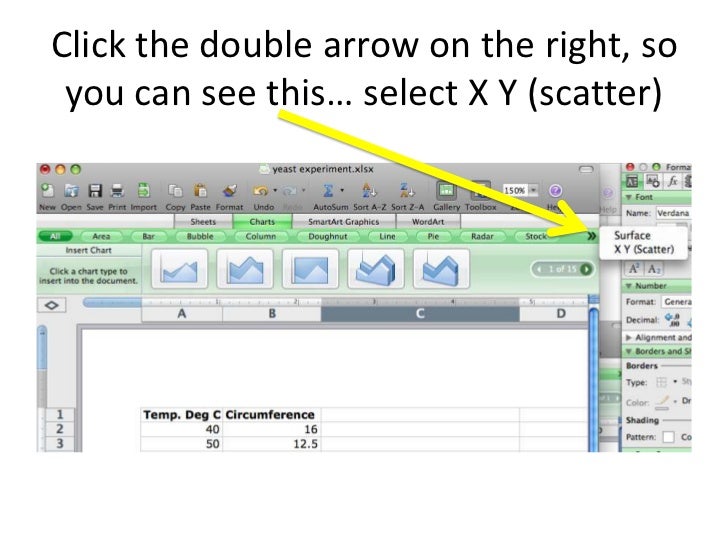

- #EXCEL 2016 FOR MAC BOX PLOT HOW TO#
- #EXCEL 2016 FOR MAC BOX PLOT UPDATE#
- #EXCEL 2016 FOR MAC BOX PLOT PRO#
- #EXCEL 2016 FOR MAC BOX PLOT DOWNLOAD#
Step 2 – Create a Chart Using these Named Ranges The Same logic works in the ChartMonth named range formula as well. OFFSET formula starts there and extends to cover all the filled cells in the column. In the ‘ChartValue’ named range formula, we have specified B2 as the reference point. The magic is done by the OFFSET function here.
#EXCEL 2016 FOR MAC BOX PLOT UPDATE#
If you go and update the value column by adding one more data point, the ChartValue named range would now automatically update to show the additional data point in it. The above steps have created two named ranges in the Workbook – ChartValue and ChartMonth (these refer to the values and months range in the data set respectively).
In the Name Manager dialog box, specify the name as ChartMonths and enter the following formula in Refers to part: =OFFSET(Formula!$A$2,COUNTIF(Formula!$A$2:$A$100,””)). In the Name Manager dialog box, click on New. In the Name Manager dialog box, specify the name as ChartValues and enter the following formula in Refers to part: =OFFSET(Formula!$B$2,COUNTIF(Formula!$B$2:$B$100,””)). Step 1 – Creating Dynamic Named Rangesīelow are the steps to create dynamic named ranges: Insert a chart that uses the named ranges as a data source. Adding/deleting a data point would automatically update these named ranges. Create two dynamic named ranges using the OFFSET formula (one each for ‘Values’ and ‘Months’ column). To create a dynamic chart range from this data, we need to: Suppose you have the data set as shown below: However, if you can’t use Excel table for some reason (possibly if you are using Excel 2003), there is another (slightly complicated) way to create dynamic chart ranges using Excel formulas and named ranges. While I have taken the example of a line chart, you can also create other chart types such as column/bar charts using this technique.Īs I mentioned, using Excel table is the best way to create dynamic chart ranges. To correct this, drag the blue mark at the bottom right of the Excel table to remove the deleted data points from the table (as shown below). For example, if you remove 2 data points, the chart will show some empty space on the right. Note that while adding new data automatically updates the chart, deleting data would not completely remove the data points. The above steps would insert a line chart which would automatically update when you add more data to the Excel table. In the Charts Group, select ‘Line with Markers’ chart. Here are the exact steps to create a dynamic line chart using the Excel table: Now, we need to use this Excel table while creating the charts. In the example below, you can see that as soon as I add new data, the Excel Table expands to include this data as a part of the table (note that the border and formatting expand to include it in the table). #EXCEL 2016 FOR MAC BOX PLOT PRO#
Pro Tip: To convert a range of cells to an Excel Table, select the cells and use the keyboard shortcut – Control + T (hold the Control key and press the T key).

Using Excel Table is the best way to create dynamic ranges as it updates automatically when a new data point is added to it.Įxcel Table feature was introduced in Excel 2007 version of Windows and if you’re versions prior to it, you won’t be able to use it (see the next section on creating dynamic chart range using formulas).
#EXCEL 2016 FOR MAC BOX PLOT DOWNLOAD#
Let’s see how each of these methods work.Ĭlick here to download the example file. In most of the cases, using Excel Table is the best way to create dynamic ranges in Excel. There are two ways to create a dynamic chart range in Excel:
#EXCEL 2016 FOR MAC BOX PLOT HOW TO#
How to Create a Dynamic Chart Range in Excel? Note that the chart updates with the new data points for May and June as soon as the data in entered. As the data changes, the dynamic range updates instantly which leads to an update in the chart.īelow is an example of a chart that uses a dynamic chart range. This dynamic range is then used as the source data in a chart.
Step 2 – Create a Chart Using these Named RangesĪ dynamic chart range is a data range that updates automatically when you change the data source. How to Create a Dynamic Chart Range in Excel?.






 0 kommentar(er)
0 kommentar(er)
